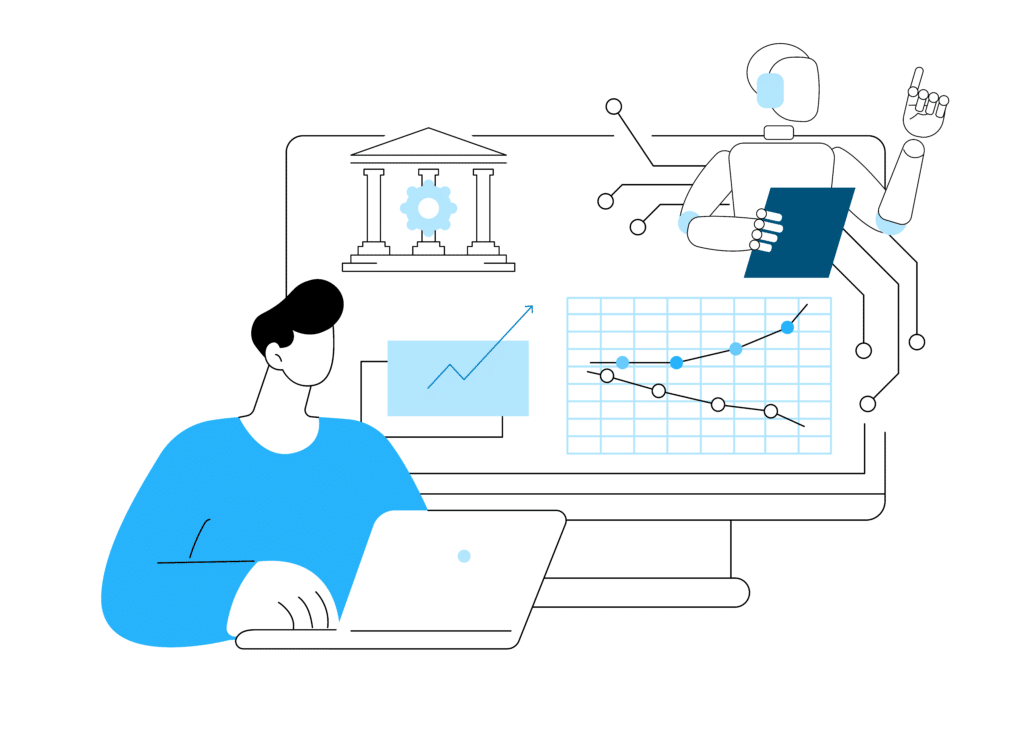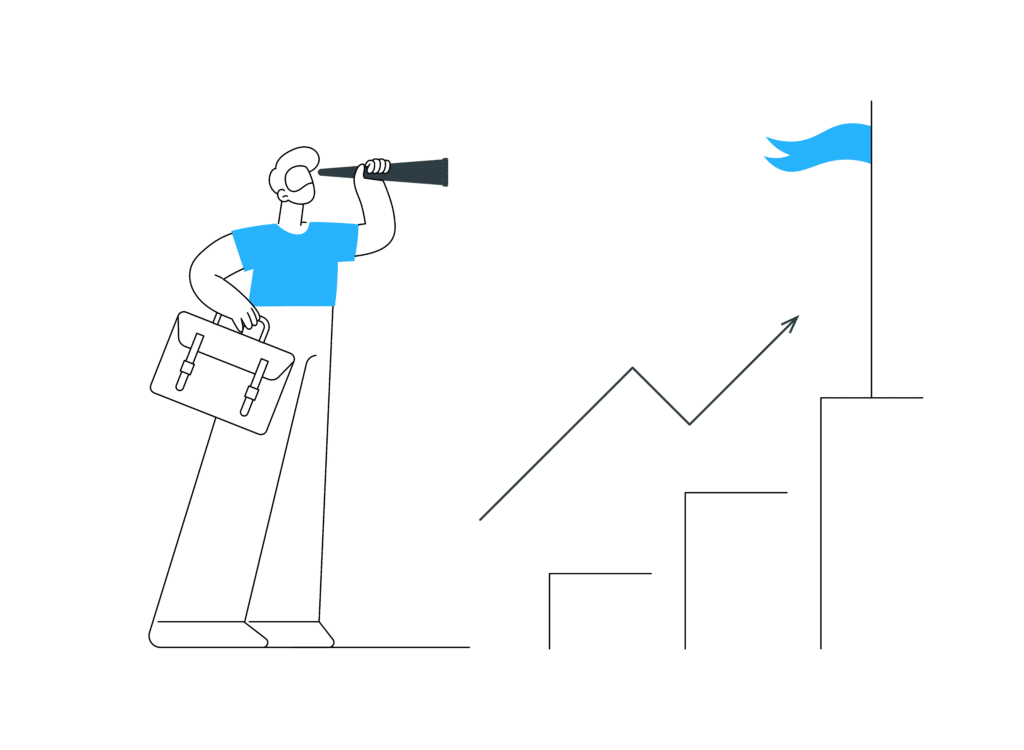1. Agentic AI
Agentic AI refers to AI systems capable of autonomous decision-making. These systems use memory, planning, and environment sensing to act independently. Their use cases include automating customer experiences and improving organizational decision-making.
This trend enables AI to take over complex tasks, reducing human intervention and enhancing productivity. By 2028, it’s predicted that 15% of daily business decisions will be made by Agentic AI. (Gartner)
Example: Agentic AI being an autonomous teammate and giving additional insights to simplify and improve decision-making.
2. AI Governance Platforms
As AI becomes a cornerstone of business operations, governing its use is becoming increasingly vital, especially in strictly regulated industries. AI systems can introduce risks like bias, data privacy issues, and ethical concerns. This is where AI governance platforms come in — designed to ensure that AI is deployed ethically and meets transparency, accountability, and compliance standards. These platforms help IT leaders embrace innovation while safeguarding against unintended consequences.
Why It Matters: Industries like international trade and transport and finance increasingly rely on AI, making ethical use of it non-negotiable. Governance platforms help ensure AI meets legal, ethical, and industry-specific requirements.
Example: A bank utilizing AI for loan approvals must comply with regulations and avoid bias. AI governance platforms ensure compliance; building customer trust and reducing risks.
Outtake: Organizations should adopt AI governance tools to promote fairness, accountability, and transparency, ensuring AI systems remain reliable and trustworthy.

3. Disinformation Security
With the rise of fake news and social engineering attacks, businesses need disinformation security tools. This technology identifies false information, verifies authenticity, and ensures secure communication.
Example: Deepfake detection technology that prevents fraudulent emails or communications from disrupting businesses.
4. Post-Quantum Cryptography
Quantum computing poses new challenges to data security, as current cryptographic methods may soon become obsolete. Post-quantum cryptography offers solutions to protect sensitive data from future threats.
Example: Ensuring competitors or hackers cannot decrypt confidential information in the future when quantum computers become reality.
5. Ambient Invisible Intelligence
Low-cost sensors and tags will soon make environments smarter by tracking objects without user intervention. These sensors collect data for real-time analysis, improving processes like inventory management and supply chain visibility.
Example: In manufacturing, automatic updates for management to keep track of maintenance requirements, stock levels, etc.
6. Energy-Efficient Computing
With sustainability becoming a key corporate focus, energy-efficient computing reduces the environmental impact of IT systems. New hardware and software are emerging to minimize energy consumption, especially as AI grows more demanding.
Example: Smart offices that automatically adjust lighting and energy use based on real-time occupancy, reducing carbon footprints.
7. Hybrid Computing
Hybrid computing combines traditional and emerging technologies (like quantum or neuromorphic systems) to handle complex tasks. Businesses will increasingly use a mix of in-house systems for critical tasks and the cloud for scalability.
Example: A hybrid setup could allow a company to store sensitive data on local servers while using the cloud for analytics.
8. Spatial Computing
Spatial computing blends digital and physical worlds by “anchoring” digital content in real environments. This immersive technology has applications in industries like retail, healthcare, and entertainment.
Example: Retailers could use spatial computing for virtual store navigation, improving customer experience.
9. Polyfunctional Robots
Robots that can handle multiple tasks by learning from instructions or examples are gaining popularity. This trend is fueled by increasing labor costs and the need for better returns on investment in sectors like warehousing and manufacturing. The polyfunctional robots offer enhanced productivity and operational flexibility.
Example: A warehouse robot that picks, packs, and transports goods, improving operational efficiency.
10. Neurological Enhancement
Technologies that enhance human cognitive abilities through brain-machine interfaces are developing rapidly. Neurological enhancements have the potential to improve education, recruitment, and workplace safety.
Example: Surgeons using brain interfaces to speed up their residency training, improving focus and learning retention.
The Vision for Tomorrow

Gartner’s top technology trends for 2025 represent key areas businesses must focus on to remain agile. From ethical AI governance to hybrid computing, these trends will drive innovation while addressing critical business challenges. As organizations plan for the future, aligning these trends with their goals will be essential for sustained growth and success.








